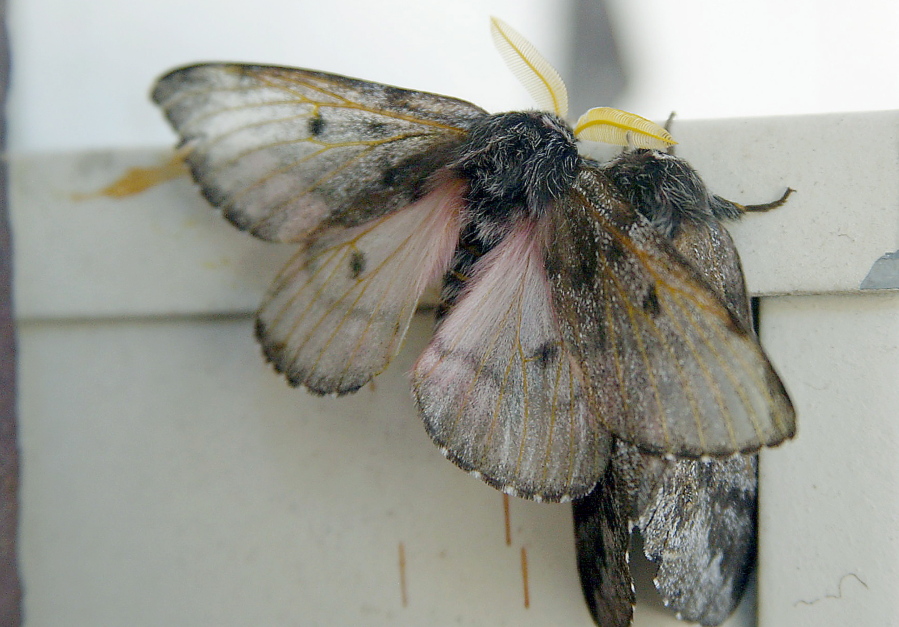BEND, Ore. — If you missed the big caterpillars spotted around Lava Butte last month, don’t worry. They’ll return — in the form of giant moths next year.
The caterpillars in late June made their way down from area pine trees and burrowed into soft soil. They will spend a year in the ground, although they can stay longer, and emerge as Pandora moths next summer.
The moths are one of the largest forest insects in North America, with wingspans that can measure more than 3 inches, according to the U.S. Forest Service.
The insects’ two-year life cycle consists of hatching as eggs in late summer on pine trees and buildings. The larvae climb pine trees to start eating the needles — they prefer ponderosa and lodgepole — and spend the first winter in the trees. They’re small and hard to see at this stage, according to Oregon State University. In the spring, they feed on the needles and grow quickly.
Stephen Fitzgerald, a forestry professor at OSU and an extension silviculture specialist, noted their “voracious appetites.”
The caterpillars will grow up to 3 inches long and strip trees’ upper needles. The larvae do not eat buds, though, so a tree will grow new needles even if the insects defoliate it. The insects’ feeding also does not kill trees, and trees have a chance to grow more needles in the year when the caterpillars have burrowed into the soil. But the defoliation, along with other stressful factors such as drought and physical damage, can lead to tree deaths.
In the summer, the insects crawl down the trees and burrow into the soil to pupate. They can remain in the ground for years but usually emerge as adult moths the next summer, then mate and die.
Big outbreaks of the insects can occur, when the populations build into an epidemic. A predator insect or a virus then tends to knock the population back. An outbreak can last for six to eight years in an area, then will not return to that area for about 20 years after it ends, although those timelines vary.
The Bend area hosted such an outbreak in the 1990s and residents recall moths covering walls and swarming to streetlights.
“It was pretty massive,” Fitzgerald said of the outbreak then.
“Based on the history, I would expect it to build up,” he added of the current population growth. But it may not be as big of an outbreak as occurred in the 1990s.



